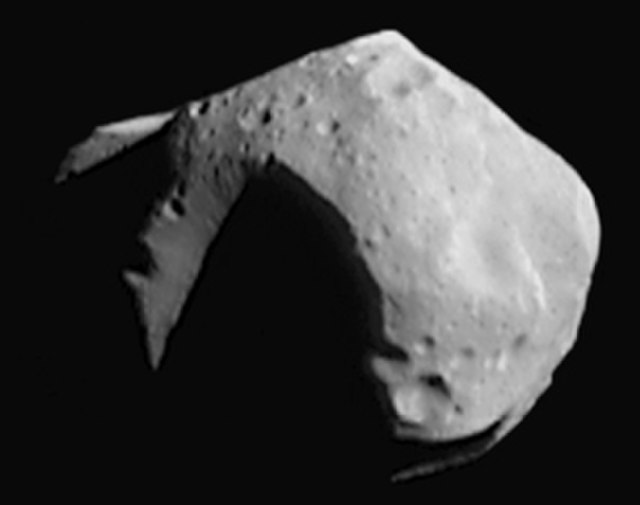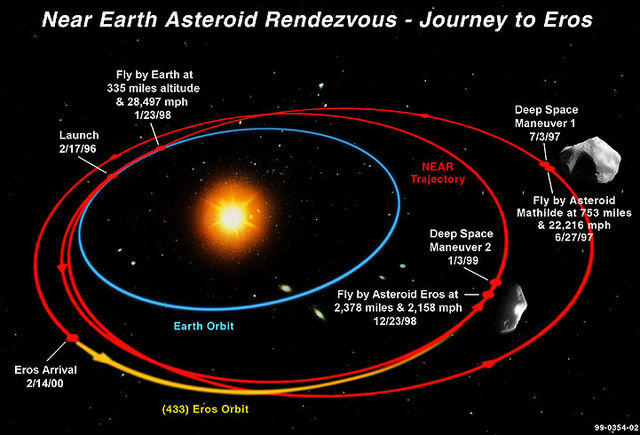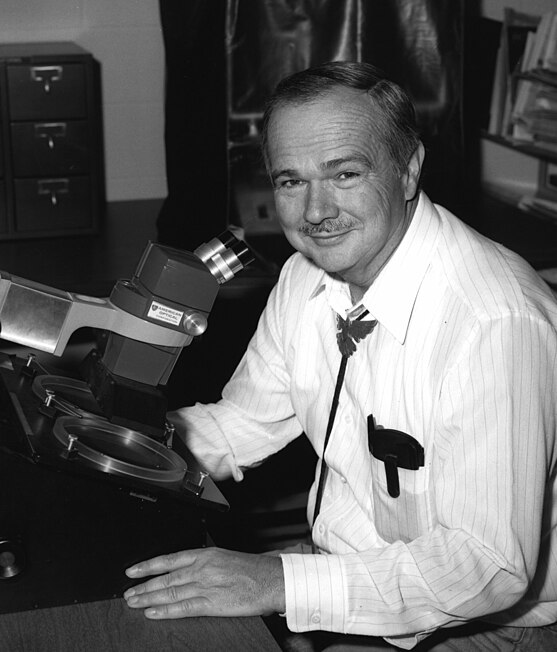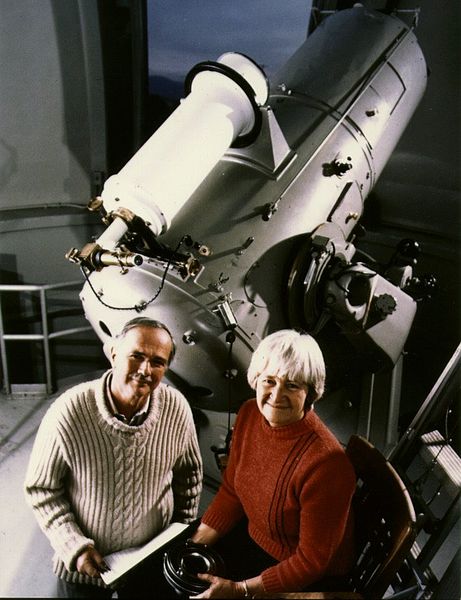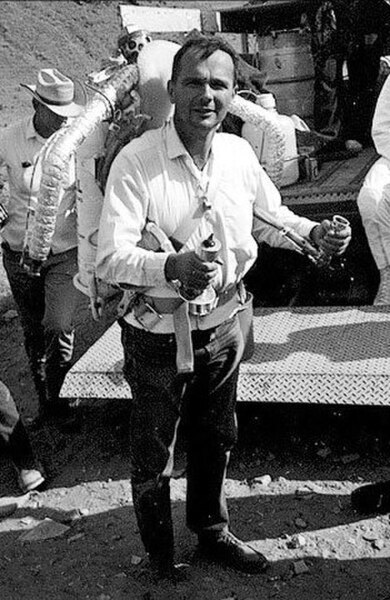Near Earth Asteroid Rendezvous – Shoemaker, renamed after its 1996 launch in honor of planetary scientist Eugene Shoemaker, was a robotic space probe designed by the Johns Hopkins University Applied Physics Laboratory for NASA to study the near-Earth asteroid Eros from close orbit over a period of a year. It was the first spacecraft to orbit an asteroid and land on it successfully. In February 2000, the mission closed in on the asteroid and orbited it. On February 12, 2001, Shoemaker touched down on the asteroid and was terminated just over two weeks later.
Near-Earth asteroid Eros as seen from the NEAR spacecraft.
Launch of NEAR, February 1996
One of the images from the flyby of 253 Mathilde
Trajectory graphic depicting the voyage of the NEAR spacecraft
Eugene Merle Shoemaker was an American geologist. He co-discovered Comet Shoemaker–Levy 9 with his wife Carolyn S. Shoemaker and David H. Levy. This comet hit Jupiter in July 1994: the impact was televised around the world. Shoemaker also studied terrestrial craters, such as Barringer Meteor Crater in Arizona, and along with Edward Chao provided the first conclusive evidence of its origin as an impact crater. He was also the first director of the United States Geological Survey's Astrogeology Research Program.
Eugene Merle Shoemaker
Gene and Carolyn Shoemaker, 1994
Eugene Shoemaker wearing a Bell Rocket Belt while training astronauts.



